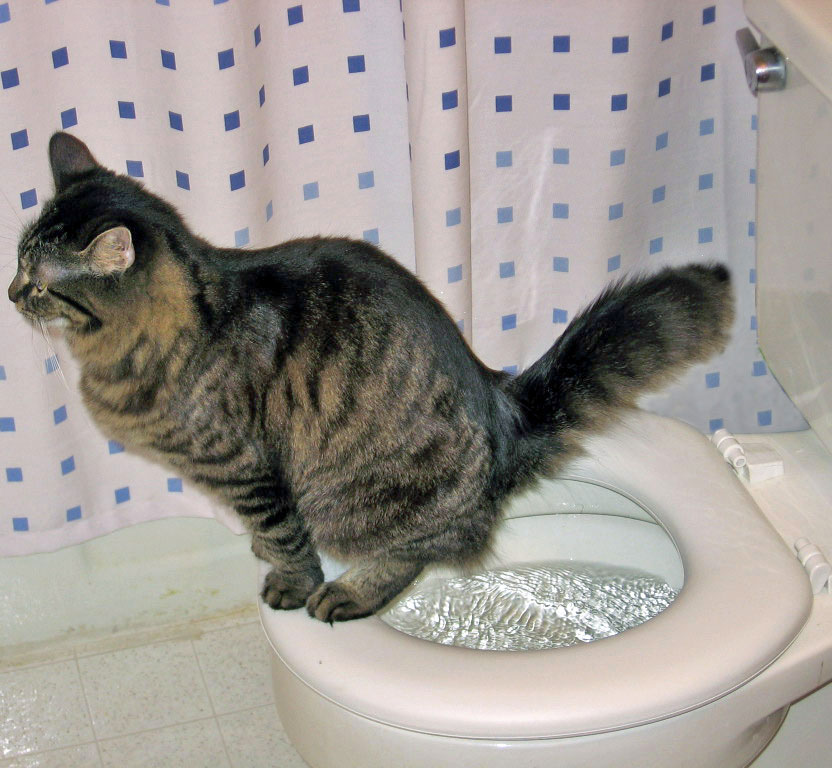Dangers of Flushing Cat Poop in Your Toilet - Preventive Measures
Dangers of Flushing Cat Poop in Your Toilet - Preventive Measures
Blog Article
Almost everyone may have their own individual way of thinking on the subject of Don’t flush cat feces down the toilet.

Intro
As pet cat proprietors, it's essential to be mindful of how we deal with our feline friends' waste. While it may seem hassle-free to purge feline poop down the toilet, this method can have destructive repercussions for both the setting and human wellness.
Ecological Impact
Purging pet cat poop introduces harmful pathogens and bloodsuckers right into the water supply, posing a considerable risk to aquatic environments. These pollutants can adversely affect aquatic life and compromise water top quality.
Wellness Risks
Along with ecological issues, flushing feline waste can also position wellness risks to people. Feline feces might include Toxoplasma gondii, a bloodsucker that can create toxoplasmosis-- a potentially extreme ailment, specifically for pregnant females and individuals with damaged immune systems.
Alternatives to Flushing
Luckily, there are more secure and extra liable methods to throw away feline poop. Take into consideration the complying with choices:
1. Scoop and Dispose in Trash
The most common technique of disposing of feline poop is to scoop it right into a naturally degradable bag and throw it in the garbage. Make sure to make use of a dedicated litter inside story and deal with the waste immediately.
2. Usage Biodegradable Litter
Choose biodegradable cat clutter made from products such as corn or wheat. These trashes are environmentally friendly and can be securely dealt with in the trash.
3. Bury in the Yard
If you have a lawn, take into consideration burying cat waste in a marked area away from vegetable yards and water sources. Make sure to dig deep sufficient to avoid contamination of groundwater.
4. Install a Pet Waste Disposal System
Buy a family pet waste disposal system particularly made for pet cat waste. These systems make use of enzymes to break down the waste, decreasing odor and environmental influence.
Verdict
Responsible animal ownership extends past supplying food and sanctuary-- it also includes appropriate waste administration. By avoiding purging cat poop down the toilet and choosing different disposal techniques, we can minimize our ecological footprint and secure human health.
Why Can’t I Flush Cat Poop?
It Spreads a Parasite
Cats are frequently infected with a parasite called toxoplasma gondii. The parasite causes an infection called toxoplasmosis. It is usually harmless to cats. The parasite only uses cat poop as a host for its eggs. Otherwise, the cat’s immune system usually keeps the infection at low enough levels to maintain its own health. But it does not stop the develop of eggs. These eggs are tiny and surprisingly tough. They may survive for a year before they begin to grow. But that’s the problem.
Our wastewater system is not designed to deal with toxoplasmosis eggs. Instead, most eggs will flush from your toilet into sewers and wastewater management plants. After the sewage is treated for many other harmful things in it, it is typically released into local rivers, lakes, or oceans. Here, the toxoplasmosis eggs can find new hosts, including starfish, crabs, otters, and many other wildlife. For many, this is a significant risk to their health. Toxoplasmosis can also end up infecting water sources that are important for agriculture, which means our deer, pigs, and sheep can get infected too.
Is There Risk to Humans?
There can be a risk to human life from flushing cat poop down the toilet. If you do so, the parasites from your cat’s poop can end up in shellfish, game animals, or livestock. If this meat is then served raw or undercooked, the people who eat it can get sick.
In fact, according to the CDC, 40 million people in the United States are infected with toxoplasma gondii. They get it from exposure to infected seafood, or from some kind of cat poop contamination, like drinking from a stream that is contaminated or touching anything that has come into contact with cat poop. That includes just cleaning a cat litter box.
Most people who get infected with these parasites will not develop any symptoms. However, for pregnant women or for those with compromised immune systems, the parasite can cause severe health problems.
How to Handle Cat Poop
The best way to handle cat poop is actually to clean the box more often. The eggs that the parasite sheds will not become active until one to five days after the cat poops. That means that if you clean daily, you’re much less likely to come into direct contact with infectious eggs.
That said, always dispose of cat poop in the garbage and not down the toilet. Wash your hands before and after you clean the litter box, and bring the bag of poop right outside to your garbage bins.
https://trenchlesssolutionsusa.com/why-cant-i-flush-cat-poop/

As a passionate person who reads on How to Dispose of Cat Poop and Litter Without Plastic Bags, I was thinking sharing that piece of content was essential. If you please set aside a second to share this blog post if you enjoyed it. Many thanks for taking the time to read it.
Detail Report this page